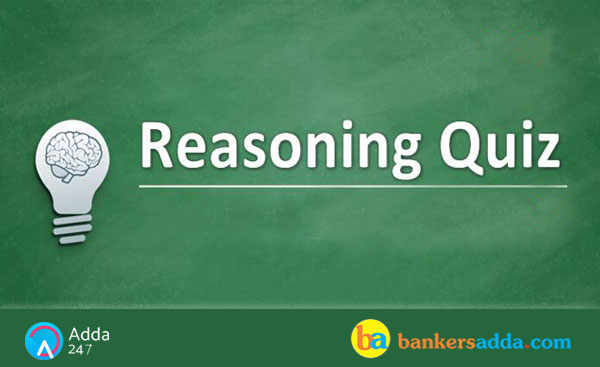Directions (1-5): Each of the questions below consists of a question and two statements numbered I and II given below it. You have to decide whether the data provided in the statements are sufficient to answer the question. Read both the statements and give answer.
(a) if the data in statement I alone are sufficient to answer the question, while the data in statement II alone are not sufficient to answer the question.
(b) if the data in statement II alone are sufficient to answer the question, while the data in statement I alone are not sufficient to answer the question.
(c) if the data either in statement I alone or in statement II alone are sufficient to answer the question.
(d) if the data given in both statements I and II together are not sufficient to answer the question.
(e) if the data in both statements I and II together are necessary to answer the question.
Q1. Point B is in which direction with respect to Point A?
I. A is to the east of C, which is to the north of E. B is to the South-west of E.
II. D is to the east of B and to the south-east of A.
Q2. How is V related to J?
I. A is mother of K, and B is daughter of V.
II. B is daughter of K who is sister of J.
Q3. Five friends J, K, L, M and N sit on the row facing towards north direction. What is the position M with respect to K?
I. K is in the middle from either side and M is at the extreme end of the row.
II. J sits adjacent to both K and N. J does not sit left of the K.
Q4. Who among A, B, C, D, E and F is the tallest?
I. D and C are taller than A but both shorter than F. B is taller than E.
II. F is shorter than E but taller than B and D. while A is not tallest.
Q5. If all persons are facing same direction, then how many persons are sitting in a row?
Statements:
I. A is on 11th position from the left end of the row. B is on 8th position from the right end of the row.
II. M is 5th to the right of A and 5th to the left of B.
Directions (6-10): Study the following information carefully and answer the question given below:
Eight persons – A, B, C, D, E, F, G and P – are standing in a queue at equidistant. Some of them are facing north while others are facing south. A is standing third to the left to F. E is standing third to the left of A. The immediate neighbours of C does not face south. G is not an immediate neighbour of A. The persons standing at the extreme ends face the same direction (both are facing either North or South). The immediate neighbours of A face just opposite direction as that of F. The immediate neighbours of P face opposite direction with respect to each other. F is standing at one of the extreme ends. D is one of the immediate neighbour of E and is not facing south. B is standing exactly between C and F. Not more than four persons are facing north. E is immediate right of D.
Q6. Who among the following is third to the right of G?
(a) D
(b) C
(c) A
(d) B
(e) no one
Q7. The immediate neighbours of E are:
(a) F and G
(b) G and P
(c) D and G
(d) G and A
(e) C and A
Q8. How many persons are standing exactly between B and P?
(a) Three
(b) Four
(c) One
(d) Two
(e) None
Q9. Four of the following five are alike in a certain way based on the above arrangement and hence form a group. Which of the following does not belong to that group?
(a) G
(b) E
(c) P
(d) C
(e) D
Q10. Who among the following is exactly between P and C?
(a) G
(b) P
(c) A
(d) B
(e) None
Directions (11-15): In these questions, relationships between different elements is shown in the statements. These statements are followed by two conclusions.
Give answer
(a) if only conclusion I follows.
(b) if only conclusion II follows.
(c) if either conclusion I or II follows.
(d) if neither conclusion I nor II follows.
(e) if both conclusions I and II follow.
Q11. Statements: W ≥ D >M = P < A = F
Conclusions: I. F >D II. P < W
Q12. Statements: H ≥ I < F < A = B > S
Conclusions: I. I < B II. H < S
Q13. Statements: B < T < Q < R= F
Conclusions: I. Q ≤ F II. T < F
Q14. Statements: M = R > Q, P < Q
Conclusions: I. M > P II. R < P
Q15. Statements: B ≥ M < Y = Z > F > T
Conclusions: I. B > Y II. Z ≥ B
You may also like to read:






 GA Capsule for SBI Clerk Mains 2025, Dow...
GA Capsule for SBI Clerk Mains 2025, Dow...
 The Hindu Review October 2022: Download ...
The Hindu Review October 2022: Download ...
 Dhanlaxmi Bank Syllabus 2025, Junior Off...
Dhanlaxmi Bank Syllabus 2025, Junior Off...


